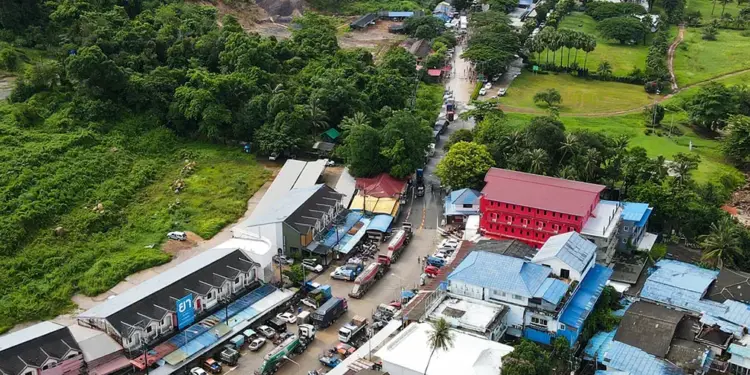BANGKOK — More than a month after deadly clashes flared along the Thai-Cambodian frontier, economic life in seven provinces has ground to a halt. From Isan’s farmland to the eastern seaboard, cross-border trade has collapsed, businesses have folded, and thousands are out of work.
To stop the freefall, both governments rushed into negotiations. At a September 10 meeting of the Thai-Cambodian General Border Committee in Koh Kong, officials agreed to loosen trade restrictions at a handful of checkpoints — the first faint sign of relief for battered local economies.
“This is a step toward stability,” said Poj Aramwattananon, who heads the Thai Chamber of Commerce. “Reopening even limited checkpoints can soften the blow for trade, logistics, and border communities.”
Recovery Zones Mapped Out
Authorities have split the border into three security zones to guide reopening:
High Risk (Zone 1): Ubon Ratchathani, Si Sa Ket, Surin, Buri Ram
Moderate Risk (Zone 2): Sa Kaeo
Lower Risk (Zone 3): Chanthaburi, Trat
Officials plan to restart commerce first in Zone 3, where Chanthaburi and Trat task forces will coordinate with customs, commerce, and industry ministries to set up controlled reopening.
Isan Braces for a Long Slump
Business leaders in the northeast warn the downturn will drag into 2025. “Purchasing power is weak, tourism is gone, and border trade is stuck in limbo,” said Somchart Pongkapanakrai, vice chairman of the national Chamber of Commerce. Hotels remain empty after mass cancellations, and many companies have frozen hiring or shelved expansion plans.
Confidence Drains Away
Buri Ram: Local chamber chief Phunsub Thepnakhon says no one is investing. Border-district trade has fallen by half, forcing hotels to cut staff. Businesses expect no rebound for at least six months.
Si Sa Ket: Tourism has dropped by a third, while rising wages pile pressure on operators. The province is unlikely to hit its 2025 GDP target, according to chamber president Rattawit Angkasakulkiat.
Surin: Fear of renewed clashes has slashed discretionary spending. “People buy only essentials, while businesses cling to survival mode,” said chamber head Wirat Setthawipatchai.
Trat’s Seafood Industry Collapses
The closure of the Haad Lek checkpoint has been catastrophic. “Revenue has evaporated,” said Sutthilak Khumkrongrak of the Trat Federation of Thai Industries. Seafood importers who once moved millions now face zero income, triggering layoffs in cold storage and ice plants. Household incomes in Khlong Yai district are down 80 percent, and many firms warn they will not last another six months.
Tourism: From Delay to Desperation
Trat: Martial law has erased foreign bookings. Insurers refuse to cover trips to conflict areas, killing international tourism outright.
Chanthaburi: Hoteliers report cancellations worth up to 1.6 billion baht in a single month. Local tourism councils are urging relief: tax breaks, loan holidays, influencer campaigns, and an expanded co-payment scheme where government covers 70% of travel costs.
Sa Kaeo’s Vanishing Market
In Aranyaprathet’s once-thriving Rong Kluea market, only a fraction of the 5,000 Cambodian vendors remain. “The market is silent,” said Therdsak Wongpho of the Sa Kaeo Federation of Thai Industries. Many traders have switched to online sales; others simply packed up and left. Border trade worth 100 billion baht a year has been reduced to scraps.
Outlook
What began as a border conflict has turned into one of Thailand’s worst regional economic shocks in recent memory. Whether fragile diplomacy and relief programs can stabilize these seven provinces — or whether the downturn deepens into collapse — will depend on how fast the border truly reopens.














